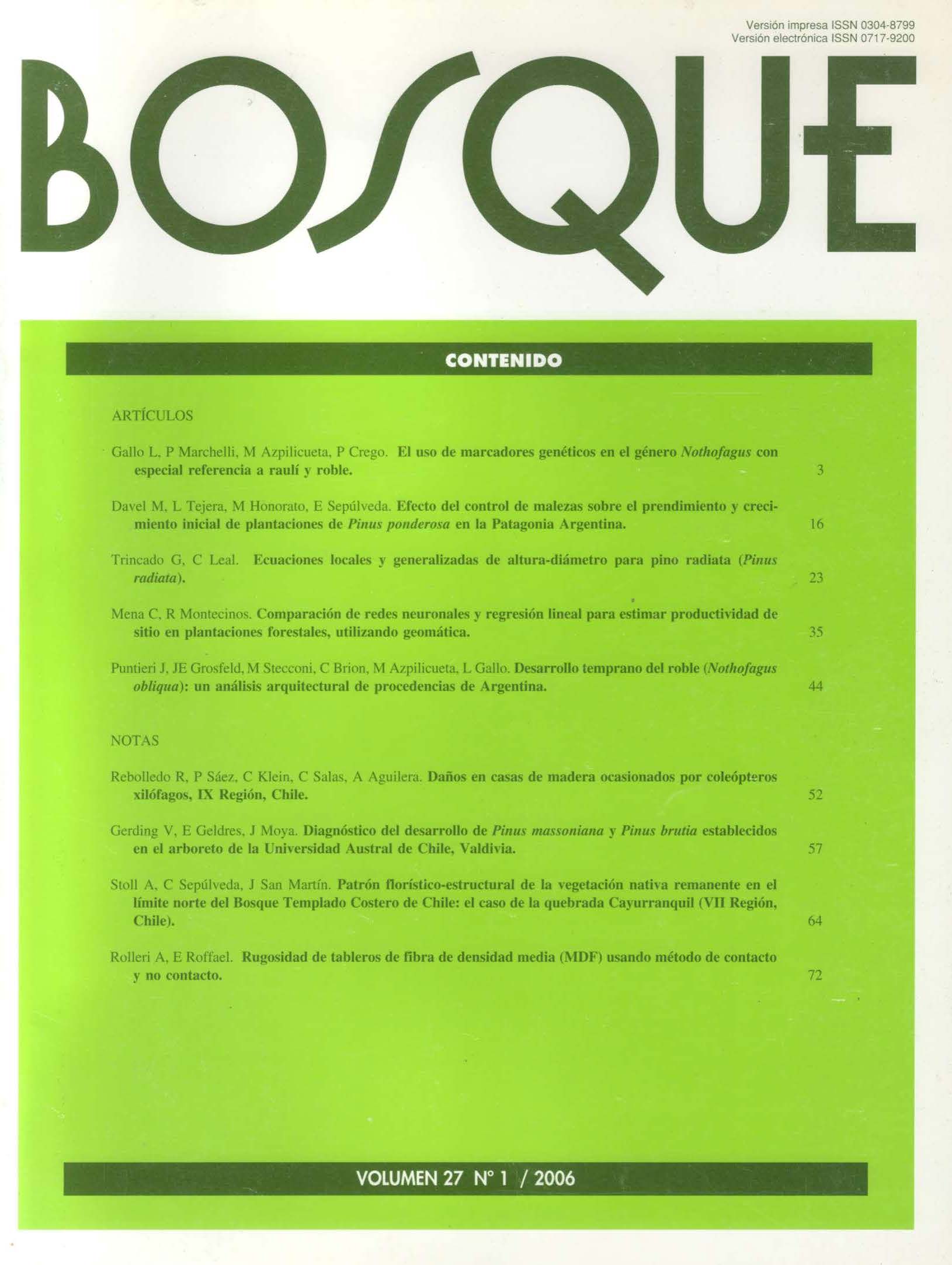Main Article Content
Apr 28, 2006
Abstract
The present article informs about the floristic-structural model of vegetation in the valley of Cayurranquil river, area of Cayurranquil (35º58’11’’ S / 72º38’25’’ W), Cauquenes, VII Region, Chile, so far unknown by literature. The number of vascular plant species was registered for 11 locations in spots of 100 m2. Then, the phytogeographical origin of the species, life forms, biological spectrum and stratification were analyzed. The flora is composed by 63 species, 93.7% of them native. The species are arranged in the following strata: arboreal (24 species), shrubs (16 species), herbaceous (14 species) and climbers (9 species). Phanerophyts and hemicryptophyts are the dominant life forms. The vegetation is a mixed wood with elements of Valdivian and Mediterranean origin. A variation of Lapagerio-Aextoxiconetum from Valdivian forest and Pitavio-Nothofagetum dombeyi from the central zone with endemic species such as Pitavia punctata Mol. and Gomortega keule were found as sintaxa.


